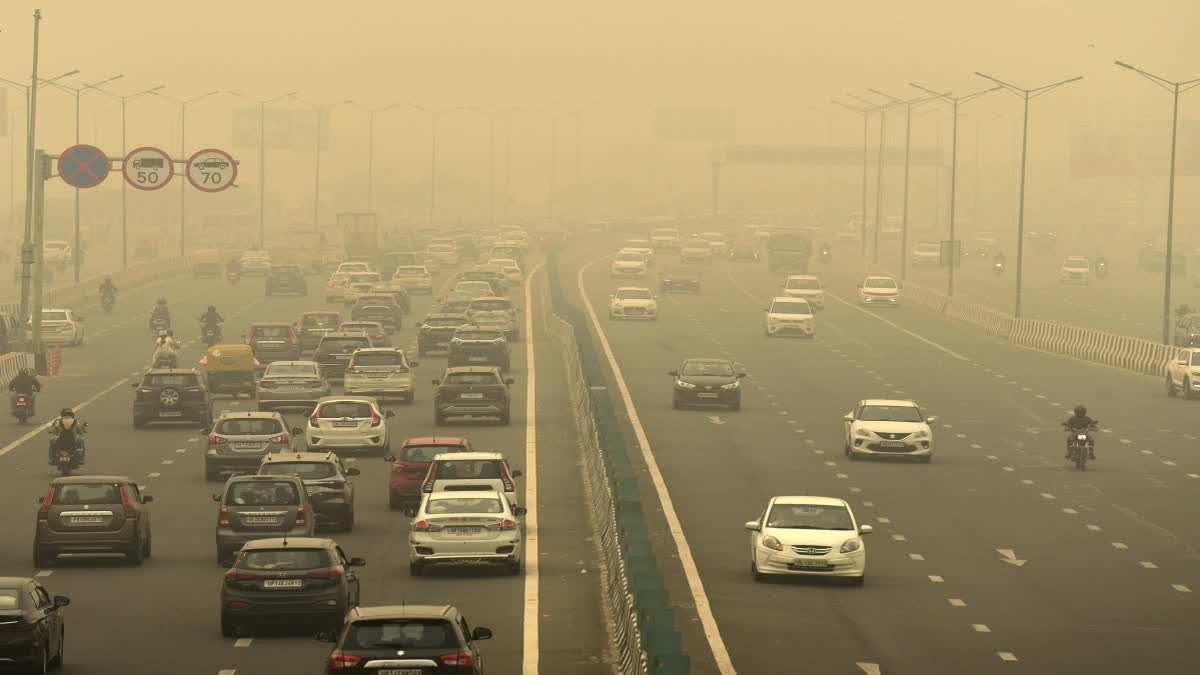New Delhi: Delhi air quality entered the 'severe plus' category for the second time in three days due to unfavourable wind conditions and a sharp rise in farm fires across north India as a result of which stringent curbs, including a ban on entry of polluting trucks has been enforced in the national capital.
A toxic haze persisted over Delhi-NCR for the sixth consecutive day, obscuring landmarks from view and causing significant problems for people with existing respiratory issues. The 24-hour average Air Quality Index (AQI), recorded at 4 pm every day, worsened from 415 on Saturday to 454 on Sunday, prompting the Centre to implement all emergency measures mandated under the final Stage IV of its air pollution control plan called the Graded Response Action Plan (GRAP).
GRAP categorises actions into four stages: Stage I - 'Poor' (AQI 201-300); Stage II - 'Very Poor' (AQI 301-400); Stage III - 'Severe' (AQI 401-450); and Stage IV - 'Severe Plus' (AQI >450). Unfavourable meteorological conditions combined with vehicular emissions, paddy straw burning, firecrackers and other local pollution sources contribute to hazardous air quality levels in Delhi-NCR during the winter every year.
According to a Delhi Pollution Control Committee (DPCC) analysis, the capital experienced peak pollution from November 1 to November 15 when the number of stubble-burning incidents in Punjab and Haryana increased. According to the New Delhi-based Indian Agricultural Research Institute (IARI), a total of 4,160 farm fires were reported from north India on Sunday -- the highest so far this season.
Punjab alone reported 3,230 incidents of stubble burning, the state's highest in a day so far this season, according to Punjab Remote Sensing Centre data. The Commission for Air Quality Management (CAQM), a statutory body responsible for formulating strategies to combat pollution in the region, asked Delhi and NCR states to order a ban on construction work related to linear public projects and allow 50 per cent of the staff in government and private offices to work from home.
Under Stage IV of GRAP, only CNG, electric and BS VI-compliant vehicles from other states are allowed to enter Delhi. Exemptions are granted only to those involved in essential services. All medium and heavy goods vehicles not engaged in essential services are also banned in the capital, according to the latest CAQM order.
On November 2, the CAQM ordered a ban on non-essential construction work and specific categories of polluting vehicles. The Delhi government has also announced the closure of all primary schools for two days in an effort to safeguard young children from hazardous pollution. The air pollution crisis is not confined to Delhi alone. Several cities in neighbouring Haryana, Rajasthan and Uttar Pradesh have also reported hazardous air quality.
Neighbouring Ghaziabad (494), Gurugram (402), Noida (414), Greater Noida (410) and Faridabad (450) also reported hazardous air quality. The concentration of PM2.5, fine particulate matter capable of penetrating deep into the respiratory system and triggering health problems, exceeded the government-prescribed safe limit of 60 micrograms per cubic metre by seven to eight times at multiple locations throughout Delhi-NCR. It was 30 to 40 times the healthy limit of 15 micrograms per cubic metre set by the WHO.
Air quality in Delhi-NCR declined over the past week due to a gradual drop in temperatures, calm winds that trap pollution and a surge in post-harvest paddy straw burning across Punjab and Haryana. Data from the Central Pollution Control Board (CPCB) shows that Delhi's air quality index increased by over 200 points between October 27 and November 3, ending up in the 'severe plus' category on Friday. Friday's 24-hour average AQI (468) was the worst since the previous high of 471 recorded on November 12, 2021.
Also read:
As Delhi spews poison, AQI level rises; tourists seek refuge in serene Himalayan towns
Delhi LG says air pollution situation extremely worrisome, calls meeting with CM



